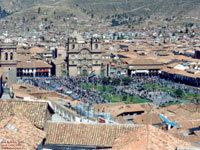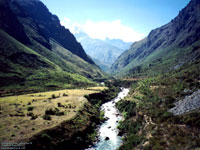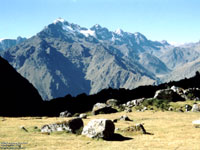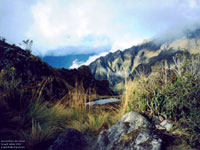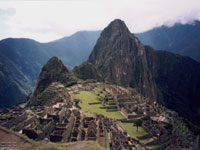|
|
||||||||||||||||||||
 |
||||||||||||||||||||
|
|
Photographs and metric measurements really do no justice to archeological sites. If something looks big in a two-page spread and has the stats to back it up, the site is really at least twice as impressive as you could imagine without visiting it. Photographs of preceramic artwork carved into stones where you can hardly tell a head from a foot are suddenly clear when you can see them with your own eyes in daylight. Potsherds might have well have been your broken dinner plate rather than a clue to an ancient material culture when viewed in a slide show every Monday, Wednesday and Friday afternoon. When you discover a potsherd with a relief pattern of snakes slithering around the rim from a late intermediate graveyard, however, a broken piece of ceramic suddenly becomes the key to the past that your professor has been trying to show you for the past two years. These were the advantages of traveling to Peru to gain first-hand experiences at the locations South American archeologists excavate the past and a real comprehension of their magnitude and significance. My archeological experience in Peru started with twelve days in Cuzco, where I visited numerous Incan sites and attended Inti Raymi, a re-enactment of the Incan New Year. For the next two days, I visited archeological museums in Lima, and then took a bus north to Chiclayo. I then visited sites and museums near Chiclayo, Trujillo, and Casma. Finally, I participated in Alejandro Chu's project excavating late preceramic through late intermediate sites in the Huarmey Valley. |
|||||||||||||||||||
|
|
||||||||||||||||||||
|
|
Desktop Patterns: (click image to view 768 * 1024 versions)
|
|||||||||||||||||||
|
|
||||||||||||||||||||
©2002 Joseph Holler - jholler1@ithaca.edu
